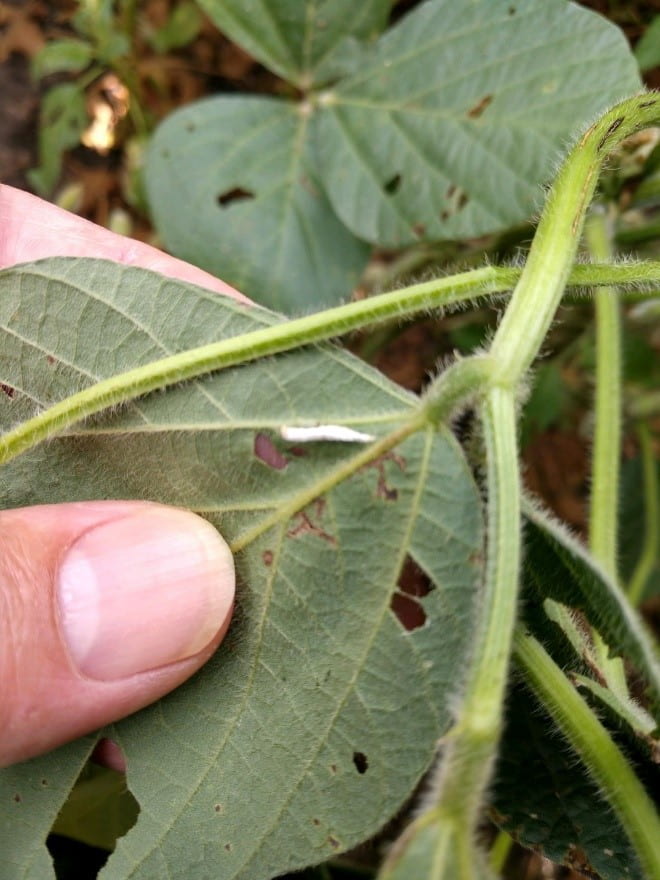–by Dr. Jeff Whitworth
SOYBEANS
There seems to be much focus on soybeans and sorghum right now, as there probably should be. Similar to last week, soybeans still seem to be relatively free of damage by pests. See picture of green cloverworm infected with fungus (fig. 1). However, there has been considerable fungicide spraying around the state and many of those applications included an insecticide “just in case”- with the rationale that it may save an insecticide application cost if an insecticide may later be justified. However, pesticide applications are very rarely, if ever, recommended “just in case” for several reasons: 1st-most insecticides commonly used for soybean pests have approximately 10-14 days residual activity, and in fact, as the plants add foliage this newer foliage will have NO residual. Thus if pests do buildup to treatable levels another insecticide application will still be required; 2nd-the more insecticide applications utilized the more pressure placed upon the pest(s) populations, thus the more and faster opportunity for pest resistance; 3rd-each insecticide application reduces non target organisms, both beneficials that may help control pests through predation and parasitism, and potential pollinators. So, from practical, environmental, entomological, and financial aspects it is just a terrible practice to add an insecticide to any kind of application unless and until it is justified by the presence of a treatable level of a specific pest(s).
Figure 1 Green cloverworm (infected with fungus–picture by Tom Maxwell)
